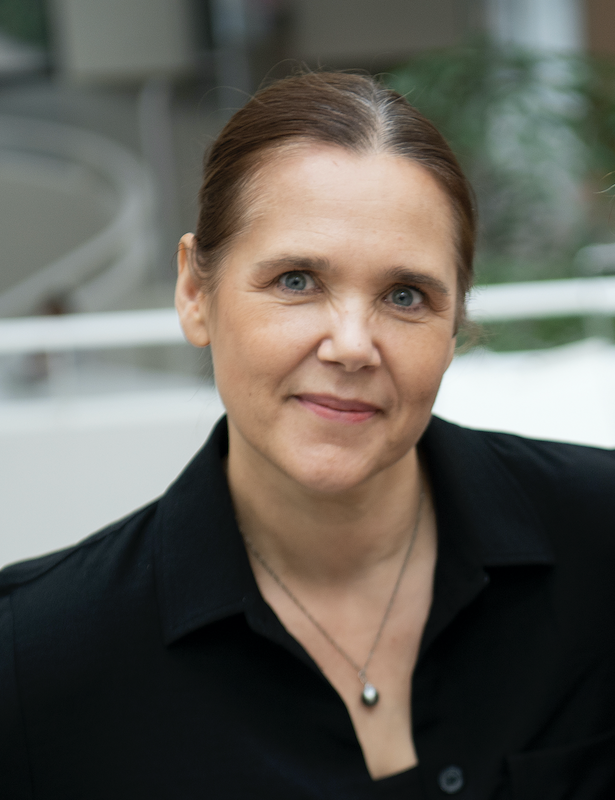
Ann Clarke is new professor: “The interplay between making a difference for public-private innovation and conducting research is enriching.”
Ann Højbjerg Clarke is a newly appointed professor in business-to-business marketing and innovation. In her research, she collaborates with public organizations and private companies to create the solutions of the future.
How can the public and private sectors collaborate to create new welfare solutions that benefit both organizations and create growth in Danish companies?
This is one of the questions that occupy the newly appointed professor Ann Højbjerg Clarke.
In her long and impressive career at the University of Southern Denmark, she has, among other things, headed a department, driven impact-oriented projects, and been an applied and recognized advisor and expert in public-private innovation and business-to-business marketing.
Successful innovation processes
In her research, Ann Højbjerg Clarke collaborates closely with both public and private actors to bring about innovations that benefit the public. Together with her research colleague Majbritt Rostgaard Evald, she is particularly driven by how the public and private sectors together drive successful innovation processes, including in the health sector.
As part of her research, she also facilitates processes and workshops and provides advice that helps companies and organizations understand the needs of different public actors.
- The goal is that we together develop solutions that not only offer high value but can also be scaled to other parts of the public and different sectors. We have a desire to create real and lasting change in the healthcare system through innovative thinking and cross-sector collaboration, she says.
Understanding the mechanisms
In recent years, Ann Højbjerg Clarke has also been occupied with the increasing digitization in the public sector, both in connection with the rollout of new digital solutions, such as virtual reality for training nurses, and digital forms of communication between the public and the patient.
Center for Sustainable Business Development and Policy
Ann Højbjerg Clarke is part of the Center for Sustainable Business Development. The center’s mission is to rethink business development so that future business development initiatives become more impactful and contribute to solving the problems of society and individual companies.
Digital communication platforms are increasingly gaining ground and are used, among other things, to reduce the distance to the healthcare system. The question is whether they reduce or actually create inequality in health, she explains.
- It’s about how we can better understand what the whole digitization does to citizens’ health. When do we reduce inequality, and when does it increase? Traditionally, we take something very classic and put it down over digitization, but is there actually something else at play?
- Are there other parameters, logics, or mechanisms that we need to get hold of to understand what happens when we move into a more digital everyday life, reality, and way of communicating?
Must be usable in practice
Ann Højbjerg Clarke comes from the research area of business-to-business, and according to the researcher herself, it has made it easy to move into public-private innovation, as both areas fundamentally deal with two organizations collaborating.
- Business-to-business is about how the company can create increased value for its customer. Therefore, I have also worked a lot with segmentation, i.e., how the company can structure its market so that it better understands its customers and can adapt its services, but also its marketing and communication, she says.
”With the appointment of Ann Højbjerg Clarke as professor, there has been a significant strengthening of business-to-business marketing and the research group’s research weight nationally and internationally. Ann’s focus on public-private innovation will contribute to the continued development of this central research field around the interaction between the public and private sectors.
One of the keywords for Ann Højbjerg Clarke’s research is ‘practice-oriented’. She cares that the organizations and companies can use the results, and as part of her research, she develops both concrete tools and courses for the companies.
- We spend a lot of energy training the companies to understand the public sector, so the companies’ solutions can be spread out faster. Often the public sector is very complex, there are many stakeholders involved, who have many different values and attitudes to these innovations, and here the companies need to understand who they create value for, but also who they do not create value for or actually create costs and challenges for.
Making a difference
The newly appointed professor describes her research approach as ‘co-creation’. The core of her work is to closely collaborate with colleagues, partners, organizations, and companies to make everyday life better.
Is that what occupies you in your research, i.e., to change something for others?
- That’s what I’m passionate about. To make a difference. Create some better solutions, some better everyday lives, and that’s for both the hospitals, the staff, and the citizens. But also, to a large extent to help the companies, because it is not easy to innovate with the public sector, especially not for small companies.
- You can say that when I do this together with the companies, I also get knowledge about what is at stake for the companies. What is difficult, when do they move, what are the mechanisms in these interactions between the public and private, which make progress. In this way, I get to make a difference for innovation, the public and private, while I get data to conduct my research. And I find that interplay very enriching, she concludes.
*This article has been translated from Danish with the help of Copilot

Meet the researcher
Ann Højbjerg Clarke is a professor at the Department of Business and Sustainability and the Center for Sustainable Business Development and Policy. She primarily researches in the areas of public-private innovation and business-to-business marketing.